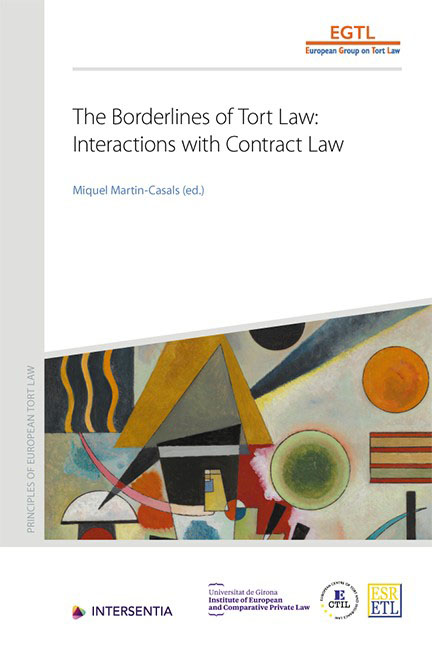Book contents
England and Wales
Published online by Cambridge University Press: 15 November 2019
Summary
QUESTIONS
TRACING THE BORDERLINES
A. DISTINCTION BETWEEN TORT AND CONTRACT
1) Justification for Distinguishing Tort from Contract
a) Historical Distinction
The categories contract and tort are not to be found in the early common law. It was not until the end of the 17th century that they began to emerge and that the distinction between them came to have significance, initially for primarily procedural reasons. With the abolition of the old ‘forms of action’ in the mid-19th century, the question of classification had to be addressed more systematically and on the level of substance, and various theoretical analyses of the distinction between the two causes of action began to emerge.
b) Theories Justifying Continued Division
The classic justification, under the ‘will theory’, is that contractual duties are based on voluntary obligations: it is for the law to set out the prerequisites for the formation of a contract and to enforce it but it is for the parties to negotiate its substantive terms. Tortious obligations, on the other hand, are coercive: they are imposed by law and not on the basis of agreement between the parties.
In practice, however, the laissez-faire theory of contract is only true as a starting point. First, because terms may be implied into contracts by the courts or the legislature and some terms that have expressly been negotiated by the parties may be struck down. Indeed, entire agreements may be struck down on the grounds, inter alia, of illegality, incapacity, mistake, duress, misrepresentation, frustration and restraint of trade. Second, much judicial ingenuity is also expended on the interpretation of the parties’ agreement so as to avoid unjust consequences. As a result of the contra proferentem rule, for example, exemption clauses are construed strictly against the party who seeks to rely on them. Third, the classification of terms also allows courts some latitude for intervention. This is the case, for example, with ‘innominate terms’, intermediate terms that may transpire to be either conditions or warranties on the ex post application of the ‘consequences of the breach’ test.
- Type
- Chapter
- Information
- The Borderlines of Tort LawInteractions with Contract Law, pp. 69 - 130Publisher: IntersentiaPrint publication year: 2019



